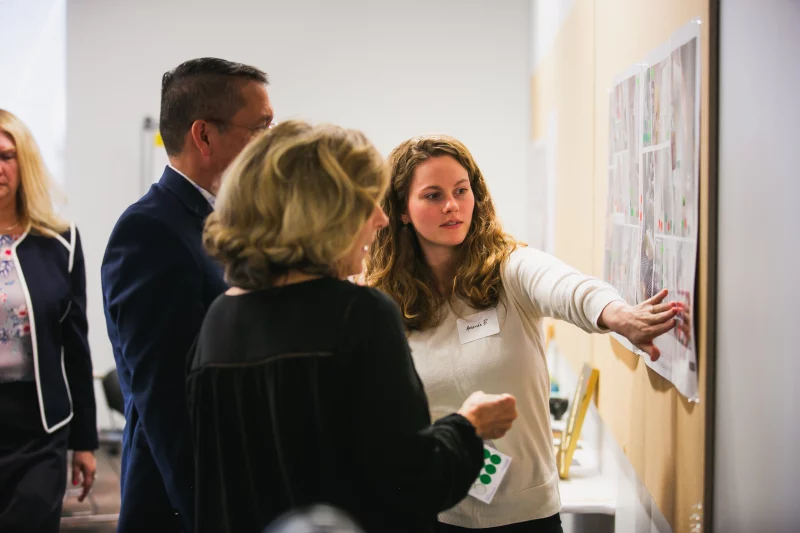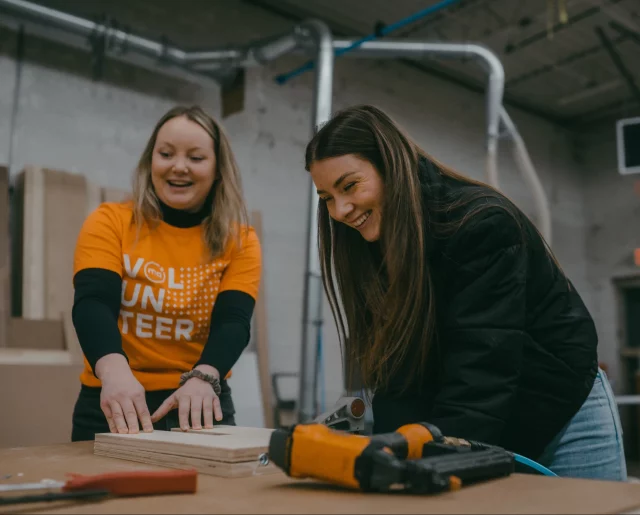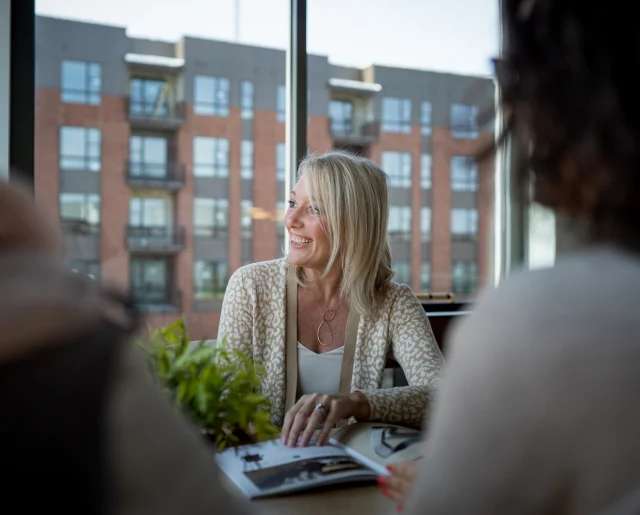Building Consensus Through Community Involvement
Community.
Through COVID, we quickly realized that community is the most critical element to human survival, and at the time, the most challenging to connect.
Now, as we step forward together, we recognize how crucial community is.
In the world of design, that means emphasizing the importance of building consensus through community involvement, as we work together to design the future – both in the sense of the built environment, and in what our lives together will become.

Community hubs are now being requested at workplaces “of the future”, community gardens at senior living facilities, community centers at multifamily residential properties and community features at retail locations. All of these progressive asks look back to one of the oldest built environment ideas around – the community center.
The progressive design projects of the future are asking designers, developers and owners to the days – and the ways – of the community center, recognizing how consensus building and decision making is essential in community projects.
Consensus building is the next level to a simplistic vote – it’s the process of finding solutions that are inclusive and that everyone supports. When respecting everyone’s opinion and individual needs, the solutions are created by all and ultimately builds a stronger community figuratively, and builds a stronger project literally – one that is designed to respond to the needs, and wants, of that particular community.
So why is building consensus for community buy-in important?
Community Consensus creates Social Capital.
Social capital is defined as the networks of relationships among people who live and work in a particular society, enabling that society to function effectively.
By taking the time to make community consensus a priority, project leaders are creating opportunities for people who aren’t usually interacting to have the opportunity to meet and build relationships. By getting the community involved, you are showing that you trust and value the members of the community’s opinion, which in turn, builds community engagement.

Involving others in the decision-making process creates an opportunity for everyone to share their ideas, learn from each other, and work toward a common goal. In turn, you foster collaboration and help break down silos. Oftentimes, this process will surface overlapping initiatives within the community and save the community and community members from duplication efforts and resources.
Harnessing the Power of Diversity to Design
Diversity is a hot topic word right now, and is often underestimated in its meaning, and its power. Recognizing diversity not only in ethnicity, but areas including gender, age, sexual identity, life phase – even interests – leaders are unable to uncover underserved needs and opportunities.
By including a diverse population of community representation in consensus building, studies have proven increased ideas and productivity, as well as improved outcomes and stronger results. Diversity leads to better decision-making and better outcomes. Sometimes, large groups of ordinary people are more successful at problem-solving and making decisions than small groups of experts, demonstrating how diversity truly makes us smarter – and more successful.
This concept of harnessing the power of diversity in design is the key to long-term commitments, and solutions, resulting in the true definition of a legacy project that will exist spanning generations. The expansion of diversity directly expands the potential of the project.
Spend Smarter, End Happier
Co-creation creates commitment.
By involving people in the decision-making process who are ultimately going to be using the final solution, leaders create project champions from the start – those people that are going to encourage others in their personal social circles to be as excited, and accepting, as they are.
Our experience in design projects has demonstrated time and time again that community consensus directly impacts costs, helping recognize potential obstacles and identify opportunities to absorb upfront costs and better determine more long-term solutions. Instead of assuming, the ability to tap into the minds, and needs, of those that most frequent features of the design, is an inside look at anticipating issues and optimizing project success.
With increased involvement will come an increased willingness to support and sustain the effort.
By including diverse voices, usually marginalized or overlooked voices are actively empowered within their community to participate in decision-making that affects their everyday lives.
Through these three powerful elements of creating community consensus, the demonstrated value of voices is clear.
The importance of human connection is undeniable, and the role of the community in making that possible is critical. Building consensus through community involvement is the key.
If you are interested in learning more about building consensus through community involvement, or to continue the conversation, please feel free to contact me at carrieb@designwithma.com. Together, we are stronger, as we explore the ways we can enrich lives through innovative design.


